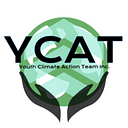Coastal Animals Living Amidst Plastic Waste
Floating toothbrushes, water bottles, fishing nets and plastic bags are fueling an artificial environment for coastal life. A study recently published by the peer-reviewed journal Nature Communications shows that coastal species are building colonies amongst trash in the ocean. This data had been collected from a massive collection of marine debris in the North Pacific Ocean known as the Great Pacific Garbage Patch. This patch, also called the Pacific trash vortex, consists of two distinct collections of debris, where the North Pacific Subtropical Convergence Zone circulates debris from one patch to another.
Colonies of anemones, brittle stars, barnacles, shrimp and more are making permanent homes on this trash and have been pegged as “neopelagic communities”, meaning novel communities out in the open ocean. After the 2011 Japanese tsunami, scientists began to suspect that coastal species could live on plastic and debris. Over 300 species had rafted across the Pacific on debris from the natural disaster over several years. This study is one of the first confirmed sightings of species living directly on plastic in the open ocean.
Linsey Haram, the lead author on this study about neopelagic communities, teamed up with a nonprofit named Ocean Voyages Institute that cleans up the ocean on sailing expeditions. The team found record-breaking tons of plastic in the North Pacific Subtropical Gyre during the pandemic, and sent Haram a sample to analyze. Haram found many coastal species thriving in the trash.
This could seem like a good new habitat for species; however, the plastics that reside in regions like the Great Pacific Garbage Patch are not biodegradable, which means that they don’t naturally break down. In a process called photodegradation, sunshine breaks plastics into microplastics. Microplastics aren’t typically visible to the human eye and make the water they reside in look murky.
These artificial environments can harm coastal species, studies show. Seals and other marine mammals are at high risk of getting caught in fishing nets because of their curiosity– a phenomenon known as “ghost fishing”. Microplastics are also known to block sunlight from algae and plankton below the surface of the water. If algae and plankton populations shift too much, they can disrupt the entire food chain. Lastly, plastics release toxic chemicals, like bisphenol A (BPA), when they are photodegraded and absorb chemicals like PCBs, which they then transfer to animals in the food chain.
Ridding the ocean of plastics seems to come with a few obstacles. Scooping out the trash could potentially kill the creatures that have made homes on it. The large size of these regions of trash also prove to be a challenge because it would be difficult to reach all the microplastics. Scientists say that the best chance of stopping the patches from getting bigger is by limiting our use of plastics. Collecting every piece of trash counts toward helping save our marine life.
